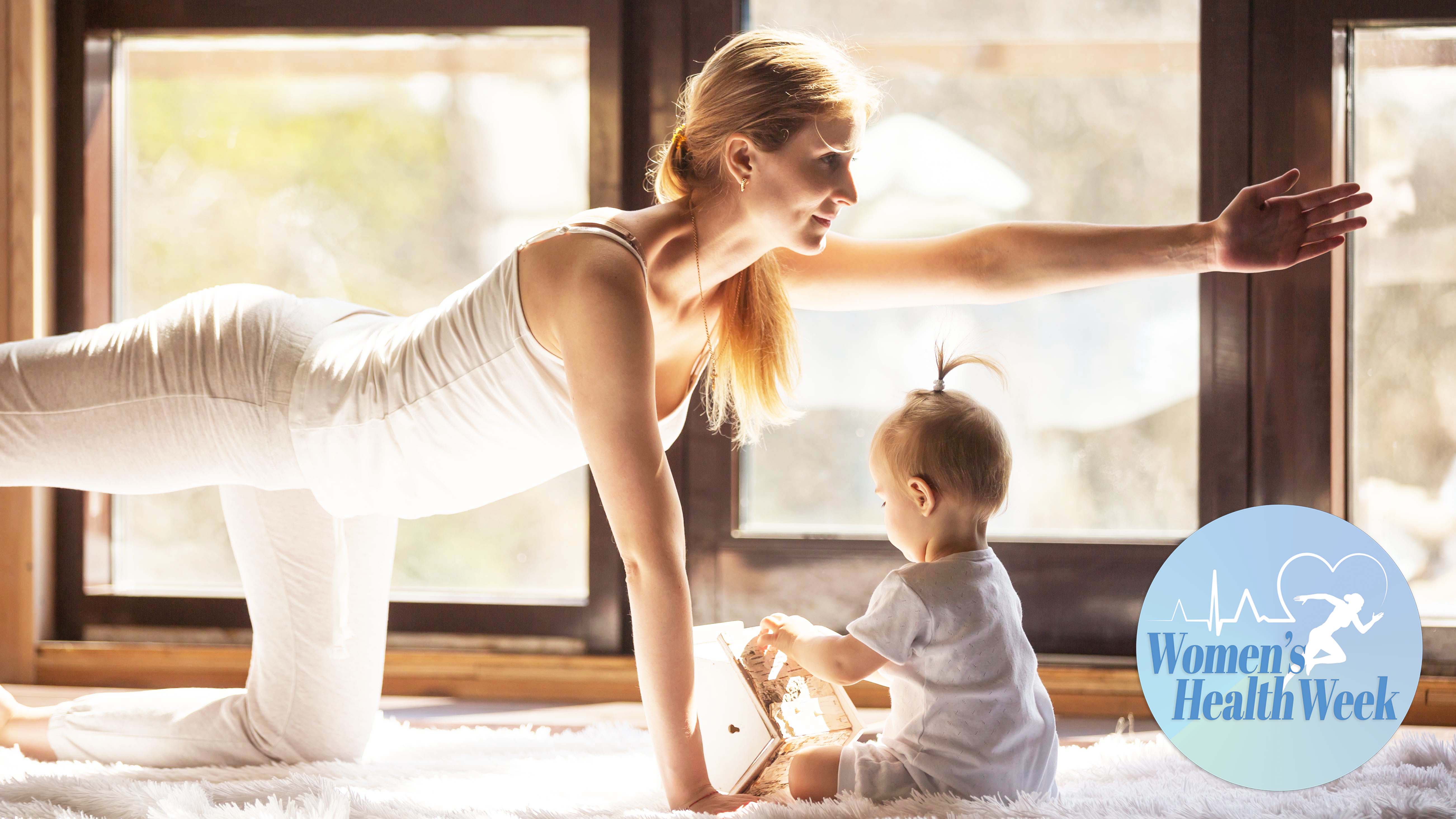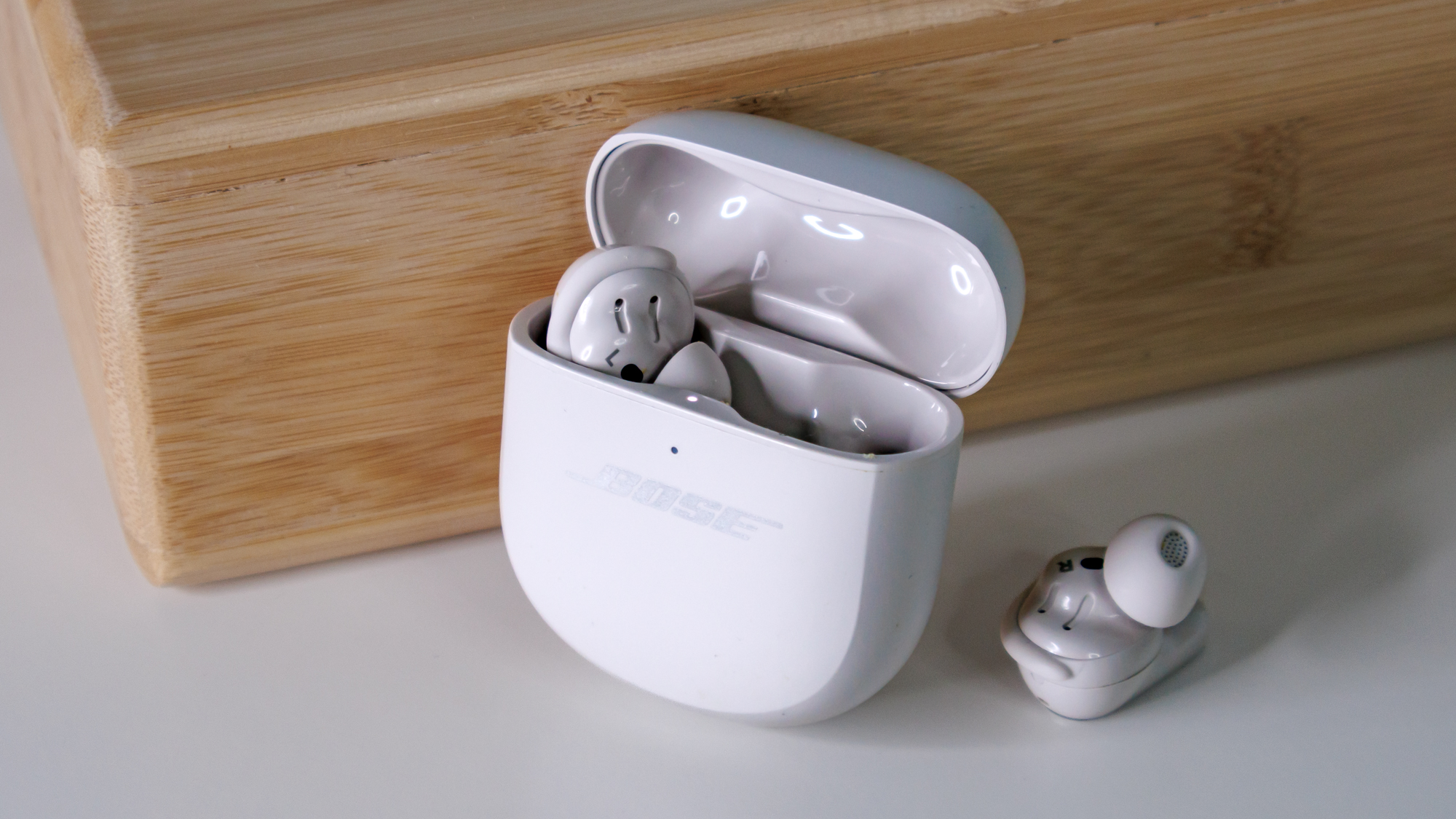Forget planks — 6 Pilates exercises to help you rebuild your core postpartum
Work those deep core muscles with these simple moves

Pregnancy is incredibly demanding on the body, but especially the core, which has to accommodate your growing baby. Once you’ve been cleared to exercise after giving birth, you might find your core feels a lot weaker than it did pre-pregnancy.
This article is part of Tom's Guide's Women's Health Week — a series of content that explores how technology and the right workouts can support and empower women through every phase of life.
Your core has an important job protecting your lower back from injury and stabilizing your body as you complete everyday tasks, so before lacing up a pair of the best running shoes or heading back to the gym, rebuilding your core should be a priority.
Of course, it’s important to be checked by your doctor or physical therapist before returning to exercise after giving birth. Most doctors recommend waiting six to eight weeks before strenuous workouts, but you can often do gentle core and pelvic floor exercises much sooner.
How soon depends on your delivery, and whether you had any complications or pelvic floor issues — always check with your doctor. Remember to be kind to your body — it’s taken nine months to grow your baby, so don’t expect to snap back overnight.
What happens to your core during pregnancy?
During pregnancy, your core muscles have to stretch and may separate to make room for your growing baby. Some women will experience diastasis recti during pregnancy, which is the separation of the abdominal muscles — this is completely normal, and is often reversible if addressed postpartum.
Your hormones change during pregnancy, and your body produces more relaxin — this hormone is designed to loosen ligaments and joints to prepare the body for labor.
Relaxin can also affect the stability of the core. Women continue to produce relaxin while breastfeeding, so you might want to be mindful that your joints and ligaments might not be as stable as they once were before taking up high-impact exercise.
Get instant access to breaking news, the hottest reviews, great deals and helpful tips.
What is the workout?
Where should you start when rebuilding your core postpartum? We turned to personal trainer Margie Tuttle-Innecco. The workout consists of six different exercises. You’ll do each exercise for 45 seconds, followed by a 45-second break, and complete three to four rounds.
Remember, the goal here is not to send your heart rate soaring or work up a sweat. These gentle exercises are designed to work on your deep core and pelvic floor muscles.
Here’s the exercises involved:
- Deep core breathing: This might not look like much, but it’s one of the most effective ways to repair diastasis recti. To do this kind of deep core breathing, start lying on your back, with your knees bent and your feet flat on the floor. You can either extend your arms to the ceiling, as Tuttle-Innecco does in her video, or place your hands around your rib cage. Take a deep breath in and think about expanding your rib cage, hold for a few seconds, then slowly push the breath out, as if you’re blowing out candles on a birthday cake.
- Heel slides: To do this exercise, start lying on your back with your arms raised to the ceiling and your back pressed into the floor. Bend your knees and press your heels into the mat, lifting your toes. Engage your core muscles, thinking about sucking your belly button into your spine and zipping your pelvic floor up, then lift one heel and step it away from the body. Pause here, return to your starting position and repeat on the opposite side.
- Knee drives: Lying on your back with your knees bent, feet pressed into the floor and arms lifted, engage your core and ensure your lower back is pressed into the mat. From here, lift one foot off the floor, keeping a 90-degree bend in your knee, driving it up towards your chest. Pause, then return it to the floor and switch sides.
- Diamond alternating toe taps: For this exercise, start in your tabletop position, lying on your back, but extend your knees out to the side and bring your toes together, so your legs create a diamond shape. Keeping your toes pointed and in the diamond shape, tap one toe down to the ground, then the other, alternating sides.
- All four deep core breathing: Start on all fours, with your knees stacked under your hips and your wrists under your shoulders. From here, like the deep core breathing you did earlier, take a deep breath and engage all the muscles in your core. Hold your breath, then let it go, relaxing your core.
- Bird dog extensions: Stay on all fours and engage your core and pelvic floor. Slowly lift one arm off the floor and extend it in front of you. At the same time, extend the opposite leg out away from your body. Move slowly and with control, pausing at the top, then reverse the movement to return to your starting position. Repeat on the opposite side.
A post shared by Margie Tuttle-Innecco (@move.with.margie)
A photo posted by on
What are the benefits?
When cleared to exercise by your doctor, there are several benefits to adding core exercises to your postpartum routine. This is a super challenging time, so give yourself grace and aim to do a couple of short workouts a few times a week at first.
Even five minutes is enough, and can help you mentally take a break from the demands of being a new mom.
As mentioned above, a strong and stable core is important — all functional movements you perform in your day-to-day life, from walking up the stairs to lifting your growing baby from his or her crib, will involve your core.
The good news is that the core muscles are extremely resilient, and if you put the work in, you can rebuild them. Adding deep core exercises like these into your routine can help speed up your recovery and get you back to the workouts you love faster.
More from Tom's Guide
- My Oura ring knew I was pregnant before I did — here's how
- Forget sit-ups — these are the best exercises to rebuild your core after a baby
- Forget crunches — this 10-minute standing ab workout strengthens your core in 10 moves

Jane McGuire is Tom's Guide's Fitness editor, which means she looks after everything fitness related - from running gear to yoga mats. An avid runner, Jane has tested and reviewed fitness products for the past five years, so knows what to look for when finding a good running watch or a pair of shorts with pockets big enough for your smartphone. When she's not pounding the pavements, you'll find Jane striding round the Surrey Hills, taking far too many photos of her puppy.
You must confirm your public display name before commenting
Please logout and then login again, you will then be prompted to enter your display name.
